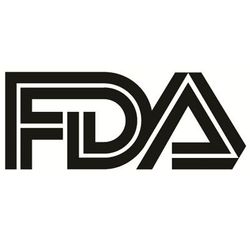
OR WAIT null SECS
Antibiotic Use In Infants Linked to Greater Asthma, Allergy Risk
New research found frequent antibiotic use in children < 2 years is linked to a greater risk of asthma, food allergies, and hay fever later in life.1,2
Children are commonly prescribed antibiotics for conditions such as ear infections and pneumonia. However, more research continues to highlight the harmful effects of antibiotics on an infant’s digestive microbiome.
Studies have previously shown antibiotics’ repeated disruption of the digestive microbiome at an early age could have detrimental impacts on the immune and nervous systems.3 The disruption may lead to the development of allergic, autoimmune, and behavioral illnesses.
Investigators from Rutgers Health conducted a retrospective cohort study with a sibling-matched analysis to examine antibiotic exposure in > 1 million UK babies and analyze diagnoses of chronic pediatric conditions through age 12.1 The primary exposure was antibiotic prescriptions of children aged 0 – 2 years, and outcomes included diagnoses of chronic asthma/allergic conditions, autoimmune diseases, neurodevelopmental/psychiatric disorders, or forearm facture. The team also evaluated potential confounders, such as maternal comorbidities, concomitant medications, prenatal and perinatal factors, infections during pregnancy and early childhood, healthcare utilization, and socioeconomic status.
“Antibiotics play a critical role in combatting bacterial infections, but physicians should be judicious when prescribing antibiotics to children under 2, as frequent use may affect long-term health outcomes,” said Daniel Horton, MD, lead investigator and member of the Center for Pharmacoepidemiology and Treatment Science within Rutgers Institute for Health Care Policy and Aging Research.2
Horton and colleagues leveraged electronic health records data from the UK (1987 – 2020). In total, the study included 685,665 children exposed to antibiotics. Children exposed to antibiotics were more likely to be female, have had infections, clinical visits outside of general practice, second-hand smoke exposure, mothers with asthma or allergic comorbidities, and more exposure to prenatal infections and antibiotics. The median age of children at the end of follow-up was 8 – 10 years.
The study found that frequent antibiotic use in children < 2 years was associated with a greater risk of asthma (hazard ratio [HR], 1.24; 95% confidence interval [CI], 1.22 – 1.26), food allergies (HR, 1.33; 95% CI, 1.26 – 1.40), and allergic rhinitis (HR, 1.06; 95% CI, 1.03 – 1.10) later in life than unexposed children. Children exposed to antibiotics had greater crude risks of asthma and allergic outcomes by ages 6 and 12: asthma (3.5% to 4.4%) and atopic dermatitis (3.7% to 5.1%) than for allergic rhinitis (0.4% to 1.1%) and food allergy (0.3% to 0.4%)
The findings were stronger after multiple antibiotic courses. These findings aligned with siblings who had different experiences with antibiotics.
Investigators did not find a consistent impact of antibiotic use on the risks for autoimmune diseases, such as celiac disease, inflammatory bowel disease, juvenile idiopathic arthritis, and psoriasis. They also did not find a consistent impact of antibiotic use on the risks for psychiatric or neurodevelopmental conditions, such as ADHD, autism spectrum disorder, and anxiety. Although the team observed a connection between antibiotic use and the risk for intellectual disabilities (5+ vs 1 -2 courses: HR, 1.73; 95% CI, 1.49 – 2.01), more research was needed to confirm these associations.
Overall, the study saw positive, dose-dependent associations between early-childhood antibiotic exposure and asthma, food allergy, allergic rhinitis, and intellectual disability.
“Antibiotics are important and sometimes life-saving medicines, but not all infections in young kids need to be treated with antibiotics,” Horton said.2 “Parents should continue to consult with their children’s doctors on the best course of care.”
References
Beier MA, Setoguchi S, Gerhard T, Roy J, Koffman D, Mendhe D, Madej J, Strom BL, Blaser MJ, Horton DB. Early childhood antibiotics and chronic pediatric conditions: a retrospective cohort study. J Infect Dis. 2025 Apr 16:jiaf191. doi: 10.1093/infdis/jiaf191. Epub ahead of print. PMID: 40237450.
Frequent Use of Antibiotics in Infants and Young Children May Increase Risk for Asthma, Allergies and Other Conditions. NewsWise. April 16, 2025. https://www.newswise.com/articles/frequent-use-of-antibiotics-in-infants-and-young-children-may-increase-risk-for-asthma-allergies-and-other-conditions. Accessed April 21, 2025.
Volkova A, Ruggles K, Schulfer A, Gao Z, Ginsberg SD, Blaser MJ. Effects of early-life penicillin exposure on the gut microbiome and frontal cortex and amygdala gene expression. iScience. 2021 Jul 15;24(7):102797. doi: 10.1016/j.isci.2021.102797. PMID: 34355145; PMCID: PMC8324854.


